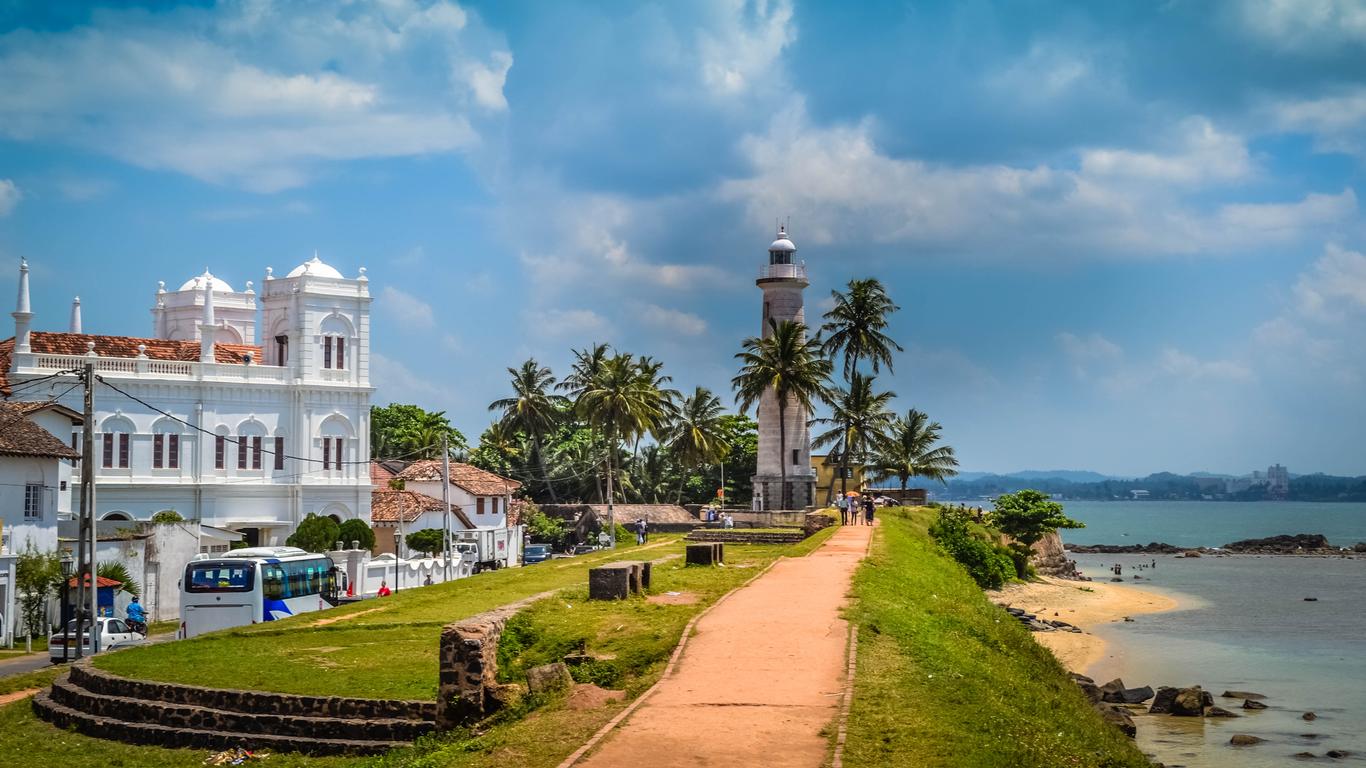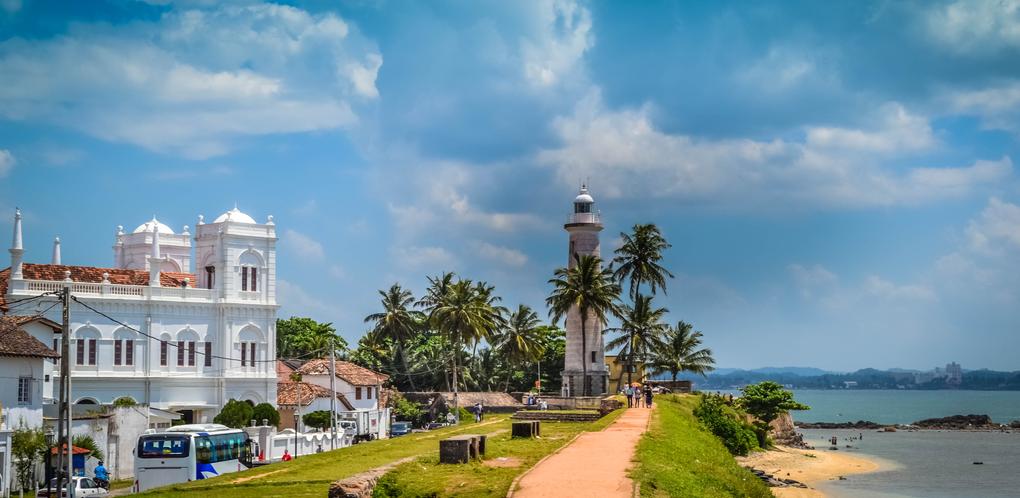1. A Stunning Legacy Of European Colonialism
Galle's most famous landmark by some distance, the city's fort seems to have been built more with postcards and Instagram profiles in mind than defensive priorities, with its stunning location overlooking the port. However, it was actually constructed by Portuguese traders in 1588, and became an essential fortification for Dutch, and later British colonial rulers. The town's heyday under the Dutch in the 17th century saw the site expanded via numerous "bastions" to hold their heavy guns, until it enclosed pretty much the entire city. Nowadays, it's an absolutely fascinating place.
2. A Golden Arc Of Gorgeous Sri Lankan Sand
Quite possibly the most popular beach in Sri Lanka, Unawatuna is just 4 or 5 miles south of Galle, and a magnet for backpackers. Part of the appeal lies in the broad bay, with a gentle arc and soft, golden sand, but the palm tree fringe and warm, shallow waters only add to the attractions. When you visit, try to tear yourself away from the water for a bit to climb up to the pagoda on the cliffs, which offers superb views across the bay. And check out the small town behind the beach, with its cafes, bars, and souvenir stores.
3. The Dutch City's Spiritual Heart
For over a century, the Groote Kerk was Galle's social center. This Dutch Reformed Church was where the colonial community came together to affirm their identity, even though they were thousands of miles from Amsterdam. Built in 1755 (but the heir to several older structures) at the center of Galle Fort, it's modestly sized but surprisingly grand inside, thanks to its wooden pulpit and impressive pipe organ. Still in use, it remains Galle's Christian hub.
4. Relax In Beautifully Restored Surroundings
Recently subject to a very successful restoration process, the old Dutch Hospital is another attractive colonial building, but it offers far more than an aesthetically appealing facade. When you duck inside the columns of the walkway, you'll find an array of restaurants serving Ceylonese curries, western-style coffee shops, and lively bars - all of which make it Galle's social center, and somewhere that pretty much every visitors finds their way to at some stage.
5. Brilliant Biodiversity Within Reach Of The Coast
Sinharaja is actually around 60 miles north of Galle in the island's interior, but it's well worth making an excursion from the city. Why? This UNESCO-listed national park is humming with animal life, including a colony of leopards and a few elephants for visitors to get acquainted with, as well as exotic species like green pit vipers and tree frogs. Although you can book bungalows for overnight stays, day trips are easy to arrange, and tour guides will be more than happy show you the reserve's biological riches.


